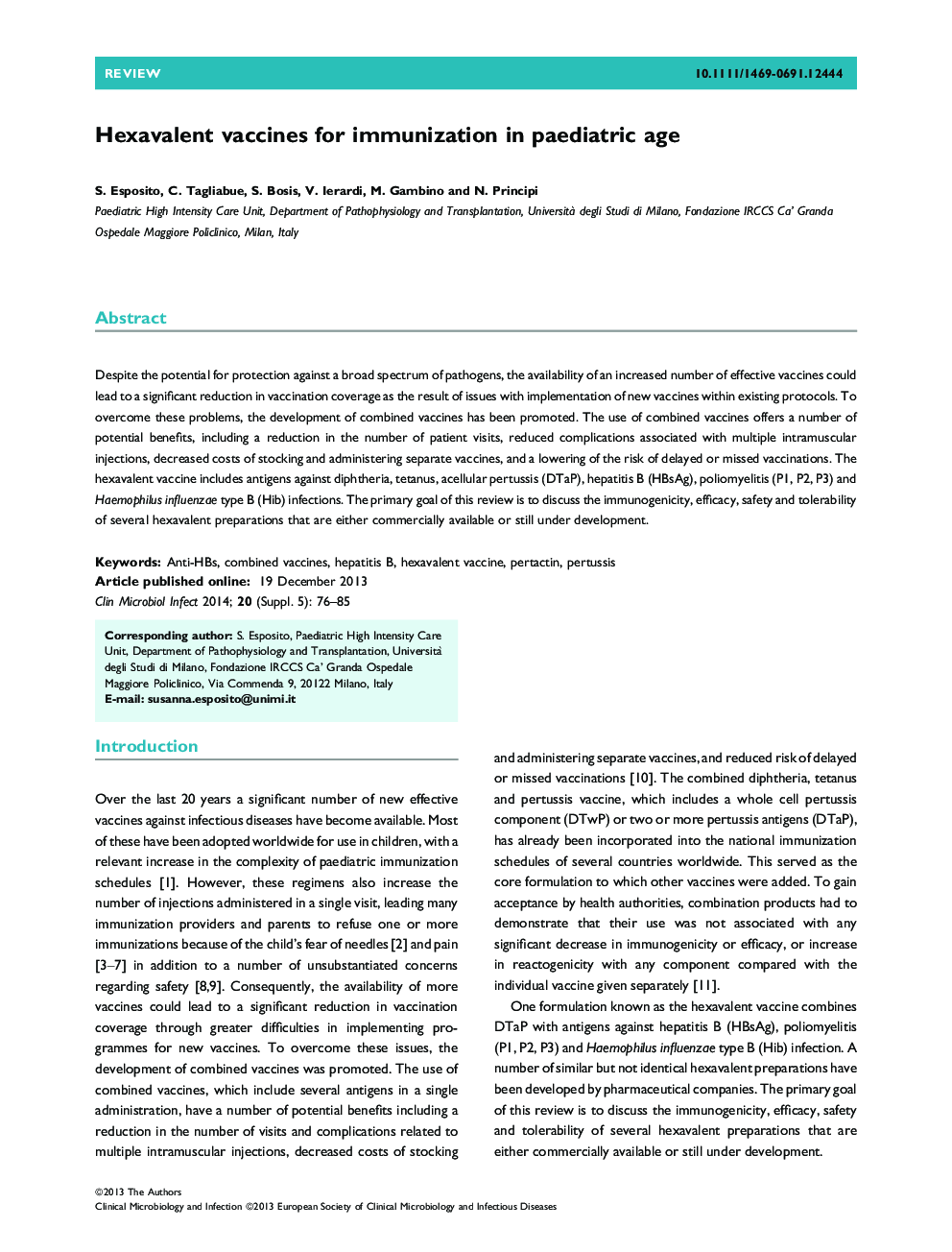| Article ID | Journal | Published Year | Pages | File Type |
|---|---|---|---|---|
| 3396696 | Clinical Microbiology and Infection | 2014 | 10 Pages |
Despite the potential for protection against a broad spectrum of pathogens, the availability of an increased number of effective vaccines could lead to a significant reduction in vaccination coverage as the result of issues with implementation of new vaccines within existing protocols. To overcome these problems, the development of combined vaccines has been promoted. The use of combined vaccines offers a number of potential benefits, including a reduction in the number of patient visits, reduced complications associated with multiple intramuscular injections, decreased costs of stocking and administering separate vaccines, and a lowering of the risk of delayed or missed vaccinations. The hexavalent vaccine includes antigens against diphtheria, tetanus, acellular pertussis (DTaP), hepatitis B (HBsAg), poliomyelitis (P1, P2, P3) and Haemophilus influenzae type B (Hib) infections. The primary goal of this review is to discuss the immunogenicity, efficacy, safety and tolerability of several hexavalent preparations that are either commercially available or still under development.
